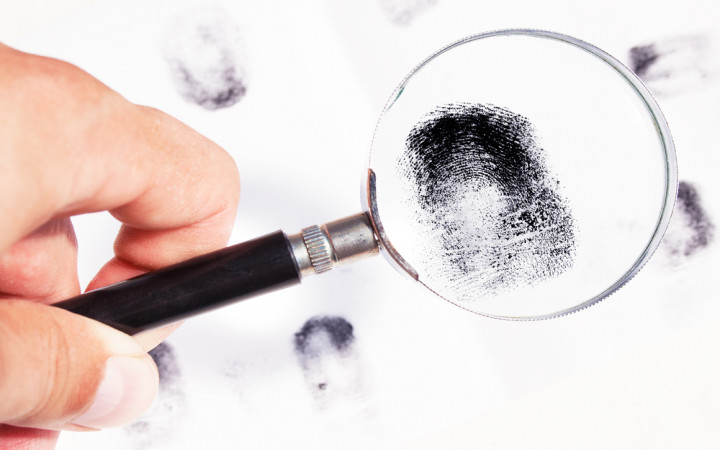Have you ever tip-toed into the kitchen to sneak a cookie out of the jar when no one was looking? Unless you wore gloves, you probably left behind evidence of your snack attack. A fingerprint expert could likely find fingerprints on the cookie jar and match them to the unique prints at the end of your fingers.
Luckily, most parents are neither fingerprint experts nor crime scene investigators (CSIs). However, the cookie crumbs on your chin might still give you away!
Take a close look at your palms and the tips of your fingers. Do you see the tiny ridges and lines? If you pressed a finger onto an inkpad and then onto a piece of paper, it would leave a print of the lines and ridges on your finger — a fingerprint!
Your fingerprints are unique. That means that no one else in the world has the exact same set of ridges and lines that you have on your fingers. Not even identical twins have the same fingerprints.
Your fingerprints also stay the same from the time you're born until death. Their uniqueness and lasting quality make fingerprints one of the best ways to identify a person.
Did you realize that you don't have to dip your fingers in ink to leave fingerprints? Sweat and body oils are constantly pushed out through tiny pores in our skin. These substances coat the ridges and lines of your fingers.
When you touch something, you transfer these substances to whatever you touch, leaving an impression of the ridges and lines on your fingers. These fingerprints — called latent fingerprints — usually can't be seen by the naked eye. However, you can sometimes see them on certain objects, such as a glass bottle.
Scientists have known about these invisible fingerprints since the 19th century. As early as 1892, English scientist Sir Francis Galton wrote a book about using fingerprints to solve crimes. It was not until 1896, however, that Sir Edward Richard Henry would develop a way to classify fingerprints based upon their general ridge patterns: loops, whorls, and arches.
Henry's system of fingerprint identification — called dactyloscopy — has been modified slightly over time. Today, it is still used by law enforcement agencies all over the world.
Over the last 100 years, advances in technology have helped law enforcement officers make even better use of fingerprints. Today, fingerprints can be “lifted" — identified and copied for later comparison — from just about any surface using special fingerprint powder.
Moreover, scientists don't even need complete fingerprints any more. With the help of advanced computers and software, even half a fingerprint can be identified and matched with a comparison sample. Computers can even be used to make comparisons automatically, although final verification of a fingerprint match is still done by scientists who carefully study and compare the fingerprints to ensure a proper match is found.
Fingerprints aren't the only thing scientists use to identify people, though. There are several different types of biological and behavioral characteristics — called biometrics — that can be used to identify an individual. Other examples of biometrics include DNA, the irises of the eyes, voice patterns, and facial patterns.




